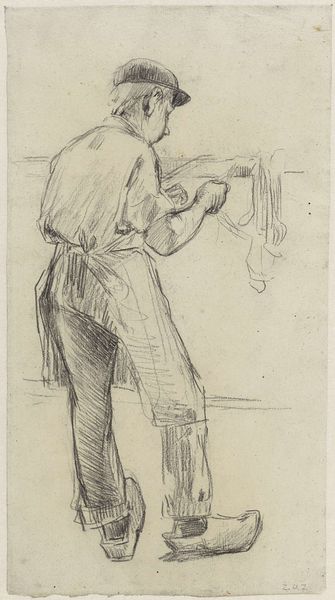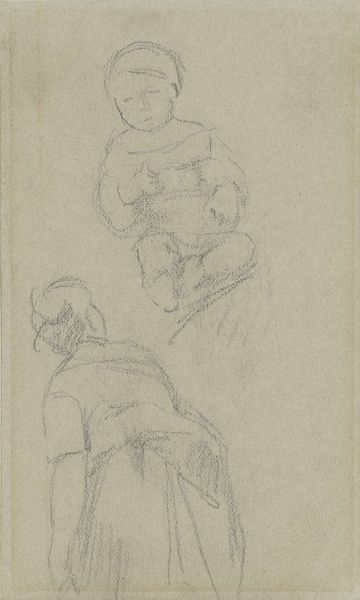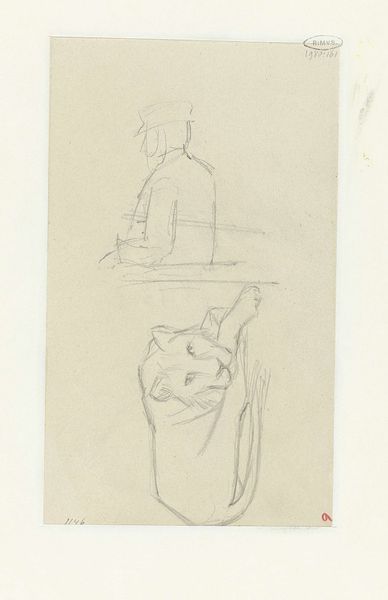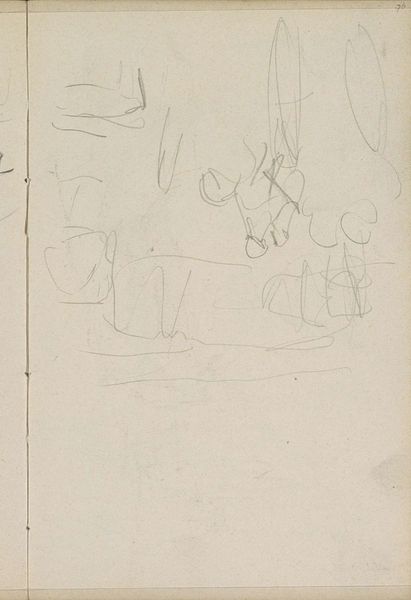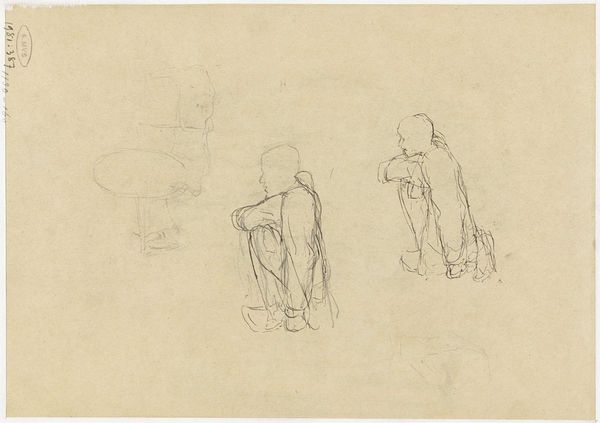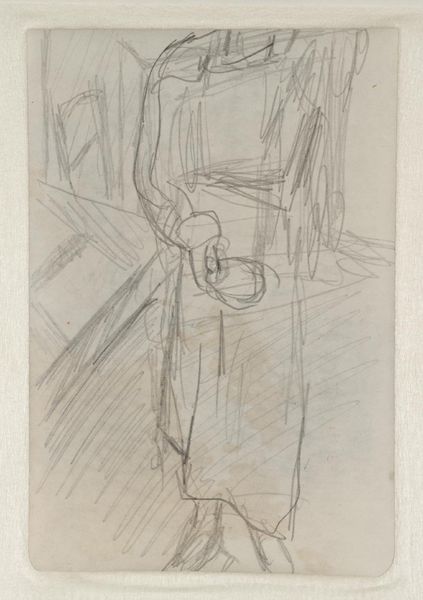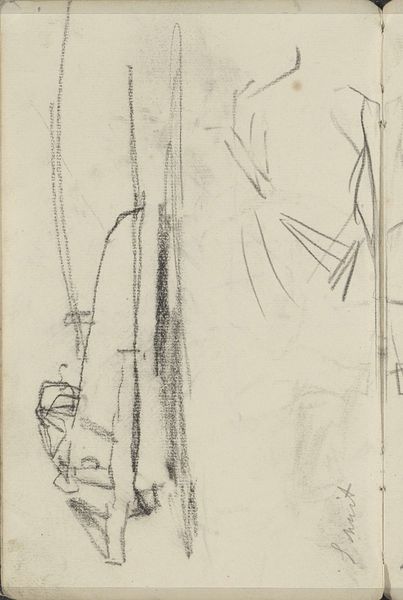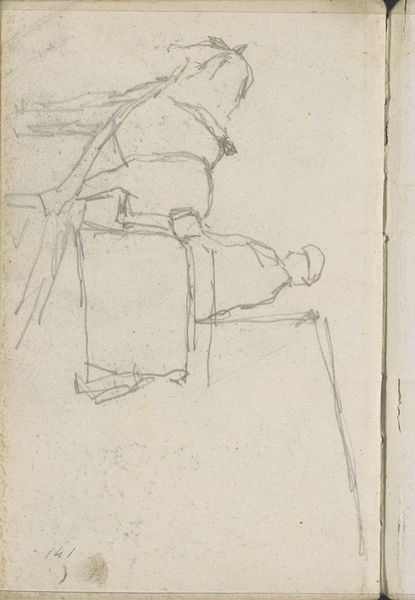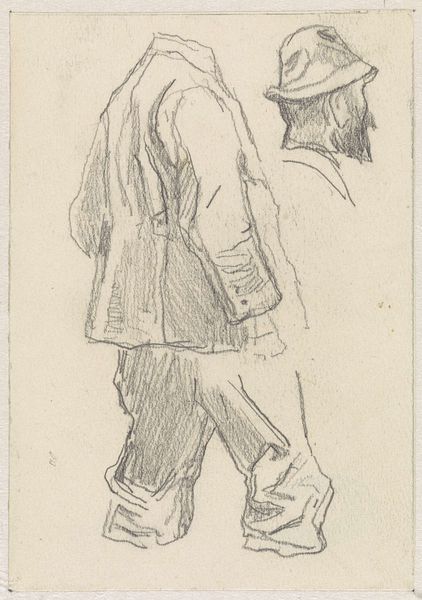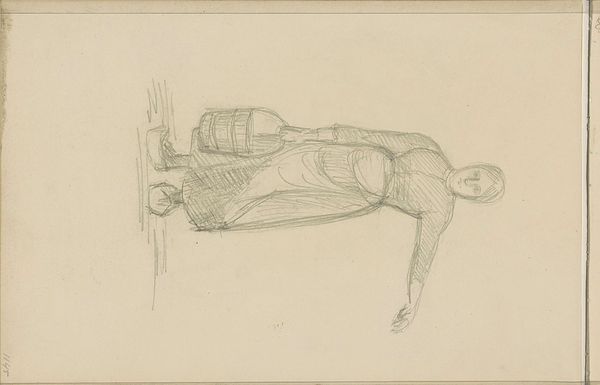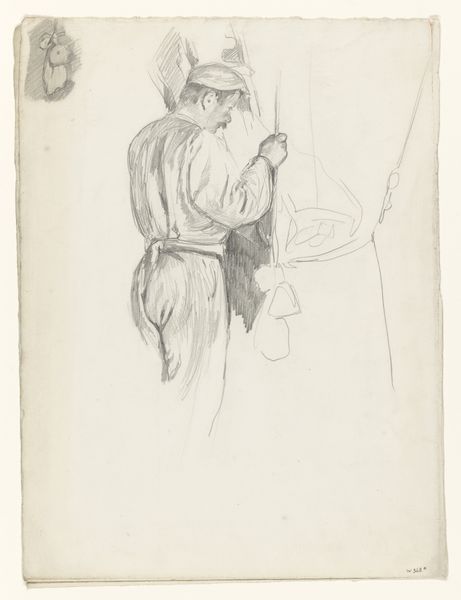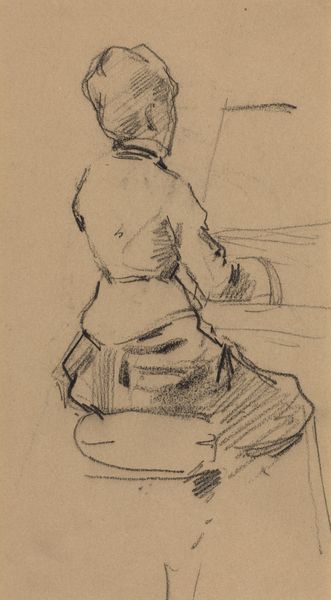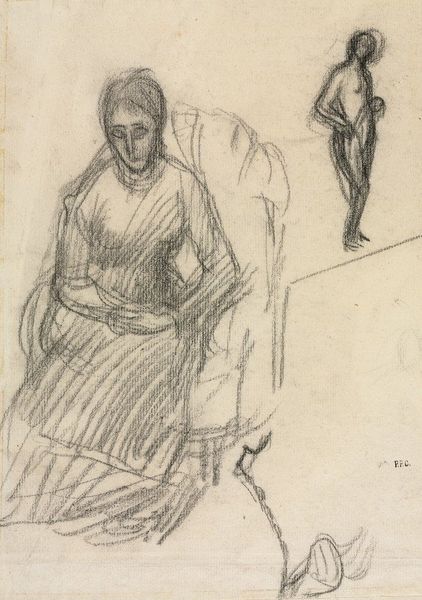
drawing, pencil
#
portrait
#
drawing
#
pencil sketch
#
figuration
#
pencil
#
realism
Dimensions: height 130 mm, width 208 mm
Copyright: Rijks Museum: Open Domain
Editor: Here we have Jozef Israëls' "Three Figure Studies," created sometime between 1834 and 1911, rendered in pencil. It's currently housed at the Rijksmuseum. I'm struck by the sketch-like quality – they feel very raw and immediate. What’s your interpretation of these figures, and how do they relate to Israëls' broader body of work? Curator: It's insightful you notice the immediacy. Israëls was deeply engaged with depicting the lives of ordinary people, especially the poor and working class. This sketch gives us insight into his process. The Rijksmuseum displaying these studies alongside his more finished works highlights the evolving social role of art. Would this quick sketch be deemed “worthy” of display when he was active as an artist? I wonder… Editor: That's a great point about artistic recognition. Are you suggesting that these kinds of sketches gain value, as we learn more about art history and appreciate more the working processes that artists employed? Curator: Exactly. These sketches weren't necessarily intended for public consumption initially. However, museums are key cultural institutions. They actively shape our understanding of art historical processes and bring forth these images, raising them to our collective visual vocabulary. How might public perception of Israëls change through the exhibition of this piece? Editor: So, exhibiting sketches can offer a more intimate, and potentially humanizing, perspective on the artist? I can see how the museum context transforms a private study into a public statement about artistic practice itself. Curator: Precisely. And what does that tell us about the way that institutions are working to shape the ways we approach art? Editor: That really reframes how I see these studies. Thanks for the historical context and how you think through that relationship. Curator: My pleasure. Thinking about these historical forces at work on art making really unlocks a fuller understanding.
Comments
No comments
Be the first to comment and join the conversation on the ultimate creative platform.
